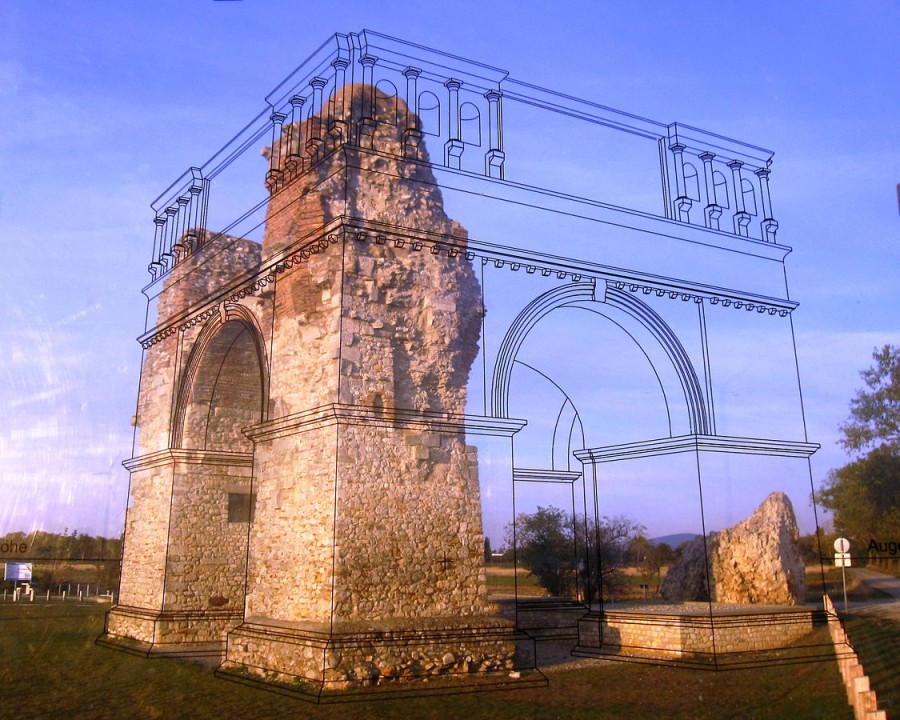Search the Blog
Latest Comments
Beatrix
Experiment!
23. April 2024
The video doesn´t work (at least for me). If I click on "activate" or the play-button it just disapp...
Katrin
Spinning Speed Ponderings, Part I.
15. April 2024
As far as I know, some fabrics do get washed before they are sold, and some might not be. But I can'...
Kareina
Spinning Speed Ponderings, Part I.
15. April 2024
I have seen you say few times that "no textile ever is finished before it's been wet and dried again...
Katrin
How on earth did they do it?
27. März 2024
Ah, that's good to know! I might have a look around just out of curiosity.
I've since learned that w...
Heather Athebyne
How on earth did they do it?
25. März 2024
...though not entirely easy. I've been able to get my hands on a few strands over the years for Geor...
Reconstructions...
Reconstructions are a wonderful thing to show how something actually looked like in the past. However, they are also a dangerous thing - almost all reconstructions require a bit (often much more than a bit) of guesswork or conjecture, which, of course, also means they can include wrong guesses.
When a reconstruction is well made, though, it looks very convincing, no matter whether it includes wrong guesses or not. Which means that a reconstruction might lead to wrong assumptions. There's also the problem of where to reconstruct... and of how much. Building reconstructed houses right on top of their original sites, for instance, was sometimes done in the past, resulting in open-air museums... however, there's a bunch of issues associated with doing the in situ things, one of them being extra disturbance of the ground (where a future dig will not yield anything useful anymore, because of the modern building activities). The same is true for partially surviving buildings - putting the reconstructed part on top of the ruins is not only an issue for the ruin itself, it also usually means that it is hard to tell where the original ends and the reconstruction starts.
On the other hand, reconstructions are invaluable in showing how something actually looked, giving a much better idea of the importance of buildings and objects. Most lay people will need some help in understanding a ruin or bits and bobs from archaeological digs, and reconstructing does give that help, while also putting things into context nicely.
This is easier for artefacts, when you can just place the reconstruction next to the original in a museum case. It's a little more difficult for an ensemble such as a grave find or a large artefact, but still possible. Buildings pose a much bigger challenge - but there's a totally brilliant, easily reversible and very flexible way of showing how something might have looked:
[caption id="attachment_2390" align="alignnone" width="640"] Heidentor, Austria. Photo: Gryffindor, CC BY-SA 3.0, https://commons.wikimedia.org/w/index.php?curid=16996191
Heidentor, Austria. Photo: Gryffindor, CC BY-SA 3.0, https://commons.wikimedia.org/w/index.php?curid=16996191
Placing a glass or plastic sheet with the reconstruction lined out in a place where you can visually overlap them - this really is a wonderful way to show how a building might have looked; easy to update and easily reversible.
When a reconstruction is well made, though, it looks very convincing, no matter whether it includes wrong guesses or not. Which means that a reconstruction might lead to wrong assumptions. There's also the problem of where to reconstruct... and of how much. Building reconstructed houses right on top of their original sites, for instance, was sometimes done in the past, resulting in open-air museums... however, there's a bunch of issues associated with doing the in situ things, one of them being extra disturbance of the ground (where a future dig will not yield anything useful anymore, because of the modern building activities). The same is true for partially surviving buildings - putting the reconstructed part on top of the ruins is not only an issue for the ruin itself, it also usually means that it is hard to tell where the original ends and the reconstruction starts.
On the other hand, reconstructions are invaluable in showing how something actually looked, giving a much better idea of the importance of buildings and objects. Most lay people will need some help in understanding a ruin or bits and bobs from archaeological digs, and reconstructing does give that help, while also putting things into context nicely.
This is easier for artefacts, when you can just place the reconstruction next to the original in a museum case. It's a little more difficult for an ensemble such as a grave find or a large artefact, but still possible. Buildings pose a much bigger challenge - but there's a totally brilliant, easily reversible and very flexible way of showing how something might have looked:
[caption id="attachment_2390" align="alignnone" width="640"]
 Heidentor, Austria. Photo: Gryffindor, CC BY-SA 3.0, https://commons.wikimedia.org/w/index.php?curid=16996191
Heidentor, Austria. Photo: Gryffindor, CC BY-SA 3.0, https://commons.wikimedia.org/w/index.php?curid=16996191Placing a glass or plastic sheet with the reconstruction lined out in a place where you can visually overlap them - this really is a wonderful way to show how a building might have looked; easy to update and easily reversible.
Comments 1
Heather
on Dienstag, 03. Mai 2016 15:54
Reconstruction in situ is a lively subject of debate:
http://exarc.net/issue-2012-1/mm/conference-reconstruction-situ-international-archaeological-meeting-calafell-2011
http://exarc.net/issue-2012-2/mm/discussion-archaeological-reconstruction-situ
I like the plastic-with-the-outline-on idea - it can be changed as more data comes to light without altering the original artefact.



